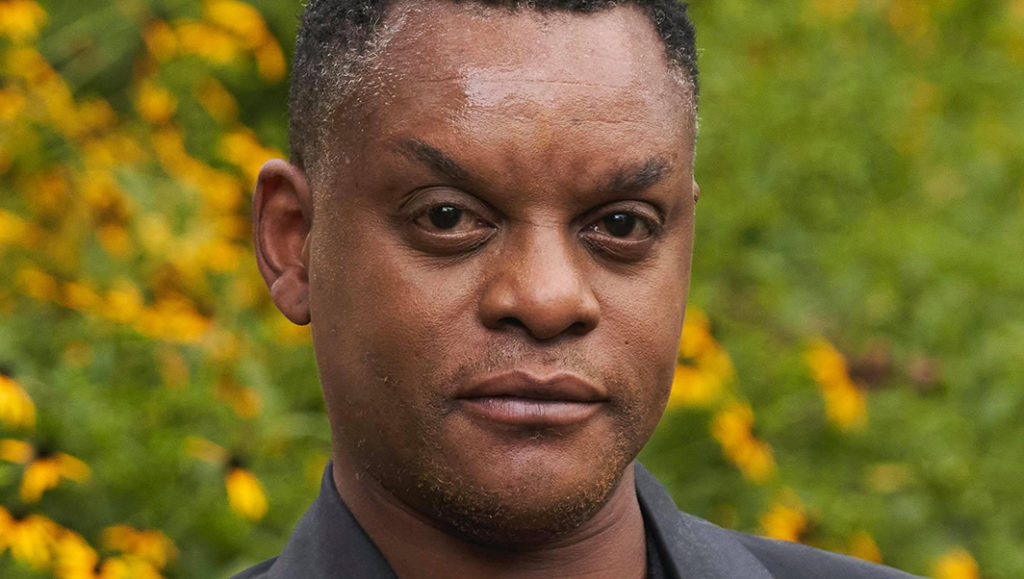Exclusive Interview: Pop Culturalist Chats with Hit & Run’s Kevin Mambo

Kevin Mambo is an award-winning artist who has captivated audiences across mediums. This year, he’s taken everyone on a wild ride in the must-see international thriller Hit & Run. Pop Culturalist was lucky enough to speak with Kevin about his multifaceted career, Hit & Run, and more!
PC: How did you discover your passion for the arts?
Kevin: I started as a musician when I was much, much younger. From elementary school into high school, I played in competitive jazz groups as a saxophonist. When I got to my sophomore or junior year, I began having problems playing and ended up deciding to join the school play. That’s where it was born.
I auditioned for The King and I. Ten minutes later, I got the lead role. I had to figure out how I was going to learn the lines, do the dialect, sing the songs, and all of that.
From there, I went on to study poly sci. I wanted to study law at McGill University in Montreal. But I realized that when it came down to it, it was going to be this and not that. I managed to get into the conservatory at USC and off I went to Los Angeles.
PC: What is the biggest lesson that you’ve learned doing music that you’ve been able to apply to your acting career and vice versa?
Kevin: When I went from music into acting, I didn’t understand what I was walking into. But I looked at the script like a sheet of music. It has a beginning, middle, and end. There are going to be chords that are dissonant, which is our conflict. There’s going to be a resolution to a major, which is the resolution for our characters. A lot of the dramatic arcs are similar and they all have their own mapping. I could actually look at this as a map and not as some wishy-washy, transient document, but really as a signpost map of what’s happening now, next, next, and next. This is how everyone on the team comes together. It’s around this particular document, whether you’re doing cues or music or lights. We all have this document to adhere to. This is the base for how we’re going to operate with each other during the run of the show.
I’ve had the opportunity to work with some of the best artists, from Bruce Hornsby to Lynn Nottage to Aimee Mann to Bill T. Jones. The list goes on and on. I always find that some of the most exciting projects or the ones that have the most amount of growth from beginning to end are the ones where the artists involved can say, “I don’t know. We’re here. We’re standing on the precipice. We’ve created this thing. What’s next? I don’t know.” As an artist, that’s one of the most exciting places to be.
PC: You’ve had a lot of success already in your career. When you look back, is there a particular moment that stands out to you?
Kevin: All of it has been so different. The things that you expected weren’t going to happen did. The things that you thought would never happen show up right in your face. One thing I’ve learned is that until you’re at the point where you as an artist and as a person are in a position where you can create something for yourself, you had better be good at either surfing or sailing. Because you are always going to be a part of the wave that’s underneath you and that’s dictating where you’re going. Until you can find a way to harness your own wind, you’re going to be at the mercy of that. I’ve managed in the last year and a half to be a part of a company called Greatest Stories Never Told. We’ve developed a show that I came in to help rewrite, direct, and write music for called Flying Hobos that’s about the first two African American men to fly across the country in 1932.
It follows James Herman Banning and Thomas Cox Allen as they fly across the country without anyone’s help, landing in places where people would help them, sign their wings, and give them food, gas, or lodging. They rolled up their sleeves and did it together. We’ve written this play to take it into schools where we can have the kids help us solve math problems about how much gas we’re going to need and which would be the next town that we could land in, and there’s also a suit that gets sewn, so there’s science and math involved in the telling of the story. But I’ve also written numbers that are sung by the actors. It’s an interactive show where we talk to the kids. We mostly bring the play to schools where the kids would never otherwise get the opportunity to see things like this.
We try to raise money through grants from the NEA and NEH. We’ve gotten some grants from NASA as well to be able to get this out there and put this on for inner-city schools. As we hit COVID, we pivoted and now we’re able to present the show digitally. It’s still interactive and live. But over the internet, with some of our designers and green screens, we’re trying to reach an audience that has hitherto been unreachable.
In a way, that’s giving me my own wind in my sails. That was a lesson that I wish I had been taught sooner. We’re now in a time where artists have more agency. They have more agency in terms of what they can put out, and the cost of production is cheaper. You can now film and put your work out on Vimeo, YouTube, etc. There’s more access and more agency now. It’s a great time for people to start thinking, “What am I going to do in my career?” but also “What am I going to do for myself?”
Hit & Run
PC: Tell us about Hit & Run and your character in the series.
Kevin: Detective Ellis Newkirk is an NYPD detective. The star of our show and executive producer is Lior Raz, who many of you remember from Fauda. Sanaa Lathan is in our cast as well and Gregg Henry, who is a great friend of mine and who most of you may know from Scandal. I mean it’s a really great team. We’ve got Gal Toren, Lior Ashkenazi, and Moran Rosenblatt. It’s an international thriller.
Lior’s girlfriend, who is a dancer, gets hit in the street in Tel Aviv after a performance, and he tries to figure out who hit her and what happened. The layers start peeling off of the onion and things are not quite as they seem.
PC: You’ve done it all in your career. What was it about this particular project and character that stood out to you?
Kevin: I really loved Newkirk’s tenacity. He has a quiet tenacity. His entire focus is solving this problem. He’s not going to rest until it gets solved. Because of that, he becomes a great character for the viewers and for the fans. He’s direct access to the ride. If Newkirk had been a louder and bigger character, there wouldn’t be the space for the audience to join him. They would always be on the outside looking in. He brings everyone with him side by side, which is cool.
PC: The series has been incredibly well received. What do you think is resonating most with audiences?
Kevin: I think what resonates most with the audience is the intelligence of the show. It’s not a paint-by-numbers experience, which is especially important in the age of COVID. I know I’ve been home and have seen just about every single police procedural ever, including all the ones from Wales, Denmark, Scandinavia, France, and Spain. I like the way our show evolves in ways that you’re not expecting. The international flavor of it is really great. Our main director and executive producer, Mike Barker, comes with our amazing DP, Zoe White. They come as a package deal from The Handmaid’s Tale. They have really great language in terms of storytelling, and her visuals are so lush. We got a chance to really stand out and not be a typical procedural show.
To keep up with Kevin, follow him on Twitter and Instagram. Watch Hit & Run today.
Photo Credit: Erick Gibson


Discussion about this post